There are somewhere in the region of 118 elements that are known of. The reason for being vague is that some are thought to exist but have never been observed. Of these 98 occur naturally. Very few of these elements are completely harmless and most present some risk in sufficient doses.
There are no hard,fast rules as to which elements are likely to prove most dangerous but we can divide the risks into three general categories. Those that are toxic, radioactive or highly reactive. Some even fit all three categories.
The thirty or so heaviest elements are all radioactive to some degree. Generally, the heavier the more radioactive. Listing those wouldn’t make for a very interesting top 10 deadliest elements so I’ve skipped a bunch of these and gone for the most exciting dangerous chemical elements.
10. Chromium (Cr)

Mention chromium and most people are thinking shiny car parts. It is also one of the elements that is essential to most higher organisms. But chromium has a dark side.
In one of its forms (hexavalent) chromium becomes a genotoxic carcinogen – that is something that can interfere with your DNA, increasing your chances of developing cancer.
Alarmingly there seem to be plenty of examples of industrial pollution involving hexavalent chromium, even in “developed” countries. Dangerous levels have been recorded within the past 5 years in both Australia and the USA.
9. Hydrogen (H)
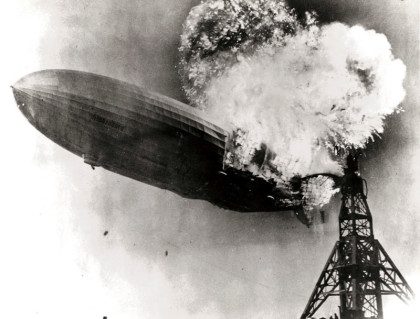
The smallest and most abundant of all the elements, Hydrogen might not seem like the most obvious choice. However, if nothing else, hydrogen is incredibly flammable. Perhaps the most infamous case of hydrogen combustion was the Hindenburg airship disaster after which it didn’t seem like such a good idea to fly around attached to a massive tank full of highly flammable gas.
An added danger of hydrogen fires is that the flames are almost invisible. This means you could be incinerated before you even saw the fire.
The main reason I’ve included hydrogen on this list is that it is the key ingredient to all things acidic. The hydrogen ion or proton (H+) is what gives acids their acidic properties, some of which are considered extremely harmful. Chief amongst these are acids’ high affinity for water – upon contact with organic matter (e.g. human skin) intense dehydration will occur which is pretty much equivalent to burning. Sulfuric acid, for example, can cause deep burns within seconds. If you think that sounds bad the superacid, fluoroantimonic acid, is over one billion times stronger…
8. Lead (Pb)
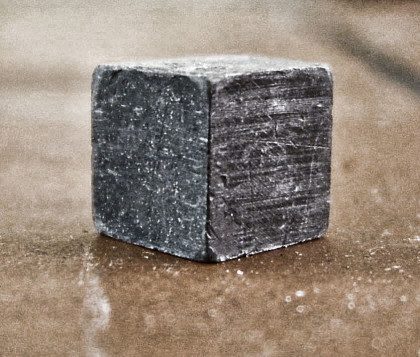
Lead used to be used for everything; paint, eating utensils, toys and water pipes just for starters. Then someone noticed it was highly toxic. Whilst it might not be the most toxic element it is probably the most likely of these nasties you’ll come across
In high enough doses lead can be lethal. Symptoms include vomiting, staggering, weakness, seizures, coma and death. But this is rare, it is long term exposure that gets most people. Whilst still serious in adults, lead poisoning is particularly destructive in children. This is because it stunts the developing nervous system leading to irreversible damage. In short lead can permanently reduce your IQ.
7. Beryllium (Be)
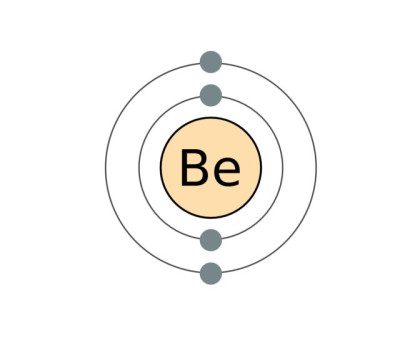
Despite its pretty sounding name and the fact beryllium is made in stars it has some rather nasty properties. The dust from beryllium is so bad for you when inhaled that they even named a disease after it; berylliosis. This incurable condition causes lesions in the lungs similar to those found in tuberculosis. The symptoms are in fact often confused with TB and the long term effects may result in lung cancer.
Beryllium is a category 1 carcinogen, it is also very useful in a number of industries.
6. Fluorine (F)
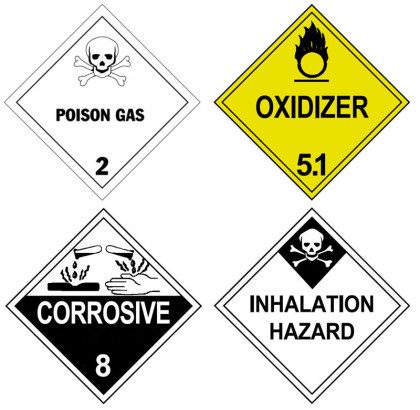
Fluorine is a generally unpleasant substance. The unappealing pale yellow gas is corrosive, highly poisonous and will try to react with almost anything – often explosively. It is chlorine’s more unstable big brother and as we know chlorine makes bleach and mustard gas, amongst other things.
Just 25 parts per million (0.000025%) concentration of fluorine is potentially lethal. It acts by attacking the lungs, airways and eyes, effectively blinding and suffocating the victim. Think mustard gas, but worse and that’s fluorine.
On the positive side, fluorine is great for your teeth!
5. Mercury (Hg)

The poisonous qualities of mercury have long been known about thanks to the self-sacrifice made by early dentists and hatters – apparently the phrase “mad as a hatter” comes from the fact that mercury was used in hat making resulting in high levels of dementia.
One of the things that makes mercury dangerous is it can be absorbed through the skin. In addition mercury also evaporates quickly making inhalation a real danger.
Another worrying feature of mercury is its ability to build up in the food chain, particularly seafood. This is because evaporated mercury eventually ends up in the sea or lakes.
The most noticeable effects of mercury poisoning are neurological. All the senses may be effected, along with coordination and muscle strength. Memory is also likely to be affected.
Sufficient doses of mercury are likely to be fatal as Emperor Qin Shi Huang of China found out when he took several pills intended to give him eternal life!
4 Arsenic (As)

The poison of choice for the Victorian lady, arsenic is amongst the classic poisons. As well as using it to kill each other they decorated their houses with it using it in both wallpaper and paints. It is believed that accidental poisoning from such sources sent King George III of Britain bonkers and ultimately lead to the death of Napoleon Bonaparte.
As with lead, arsenic poisoning can be a sneaker, building up over time causing a range of symptoms. There is nothing sneaky about a high dose though; the main consequence is intense gastric distress in which everything goes wrong with your gut – vomiting, diarrhea and bleeding, and plenty of pain. Death often follows within hours.
3. Caesium (Cs)
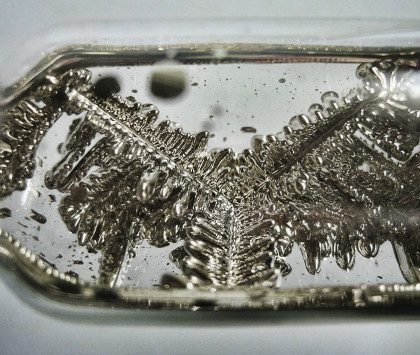
The super-reactive metal caesium (or cesium) needs very little encouragement to spontaneously explode. In fact just the presence of thin air is enough to make caesium burst into flames. If your natural reaction would be to throw water on this, that might not be such a good idea – contact with water makes it explode!
For this reason caesium must be stored in a vacuum, and only in small quantities.
In addition to these explosive properties cesium is also quite toxic and mildly radioactive.
2. Polonium (Po)

Whilst polonium might not be the deadliest element per se, it is probably one of the most effective poisons used by man. Weight for weight polonium-210 is 250,000 times more toxic than cyanide. This toxicity is radioactive in nature and caused by the release of alpha particles which damage organic tissue.
Now, the good news is that alpha particles cannot penetrate the skin. The bad news is that if ingested, one gram of polonium 210 would be sufficient to kill 10 million people.
Fortunately (or not), the difficulties in obtaining and handling polonium mean its use is largely the reserve of governments.
1. Plutonium (Pu)

All the elements with an atomic number of 84 and above are radioactive. The simplest explanation for this is they are too big and unstable and breakdown giving off lethal radioactive particles as they do.
The biggest and baddest of all the naturally occurring elements is plutonium with an atomic number of 94. Unlike other naturally occurring radionuclides Pu gives off alpha, beta and gamma radiation. As well as being highly radioactive this element is also toxic like other heavy metals are.
Inhalation is the most harmful route for plutonium exposure and one estimate suggests 500g of plutonium dust released into the air would be sufficient to kill nearly 2 million people. If this is the case it is slightly alarming that there are several tons of the stuff in the biospheres thanks to weapons testing in the 1950s and 60s!
In addition to these toxic qualities plutonium is also the material of choice for nuclear weapons. Consider the one kilogram of pure plutonium pictured – this contains sufficient energy to power a major city for several hours. It is also sufficient to make a 10 kiloton explosion, i.e. the same as 10,000 tons of conventional explosives. This is about half the size of the Hiroshima bomb.

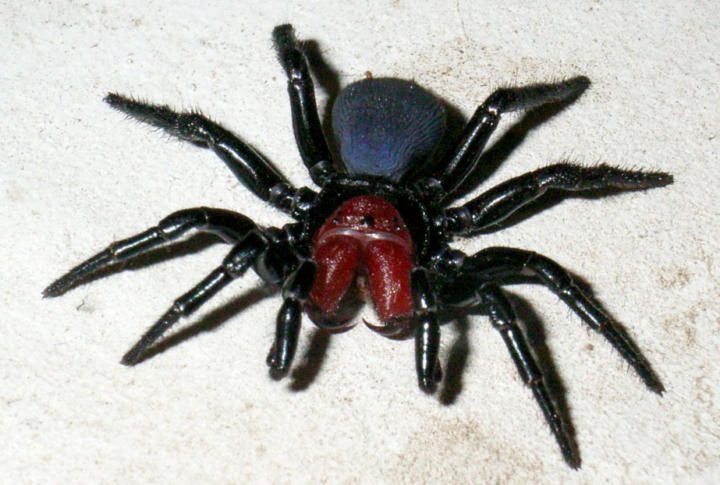
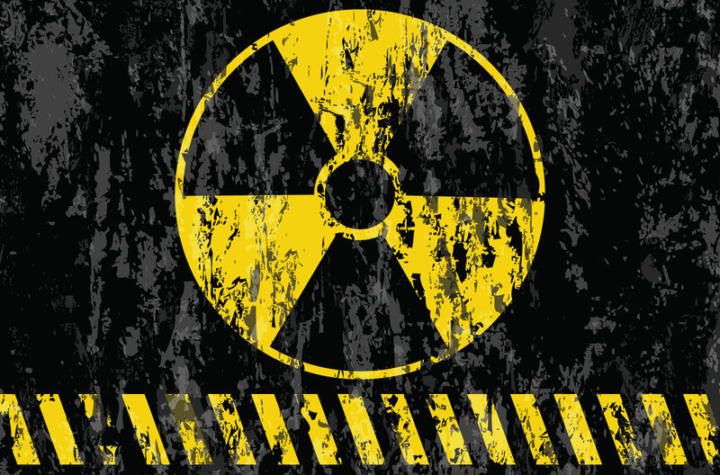
why didn’t Ununquadium make it?
If more than a certain amount of Plutonium is in one place at one time, it can “go critical” and release lethal amounts of radiation as it undergoes a meltdown. If it is compressed to a high density it will produce an enormous explosion–enough to destroy a medium sized city; this is how a nuclear bomb works. Case in point: Nagasaki.
Thallium, the most poisonous stable element which is fatal at 15 mg, which also has a long history of use as a murder weapon and has been called “The Poisoner’s Poison” for its difficulty to detect. I understand that you didn’t want to flood the list with radioactive elements, and you didn’t include chlorine because there was fluorine, but Thallium can’t really be replaced by any other elements on this list.
Hi!
All significantly radioactive elements might be on this list By the bye, ordinary cesium is not mildly radioactive, as it is comprised of only one isotope, Cs-133, which is stable. There is a small amount of radioactive Cesium 137 throughout the environment due to nuclear bomb tests and accidents, but ordinary (mineral-derived) cesium is unlikely to have any of that. While ordinary cesium is NOT “mildly radioactive”, its lighter congeners, rubidium and potassium, ARE. (Each has a naturally occurring primordial radioisotope; much of the heat within the earth is due to Potassium 40; most of the radioactivity of the human body is due to potassium) I agree with Mr Brower: radon deserves special mention. It is one of the most insidious of the toxic elements, as, though its half-life is a tad less than four days,.. because it is a gas, it is breathed in and decays in the lungs, where its daughter elements, all solids and all highly radioactive, collect and cause great damage. And it is continually produced by the uranium and thorium in rocks and soils. You’d think four days isn’t much time for the gas to seep up into houses and the atmosphere, but as Rn is relatively inert chemically, there’s little to prevent that seepage,
Fluorine gas if of course one of the most aggressively dangerous substances on (or off) earth, but one is not likely to encounter it in everyday life. But fluoride ion is another story. It is VERY toxic– sodium fluoride (yep, the ingredient in toothpaste) is used as insect and rat poison… a gram (one thirtieth of an ounce) can be lethal. So when the instructions for using fluoride toothpaste tell you not to swallow it… they mean it,
I don’t believe that sodium fluoride has been used as a poison, I think you are referring to sodium fluoroacetate. Sodium fluoride is toxic, but not that toxic, and there isn’t much in toothpaste. I once swallowed a big glob of toothpaste (when I was a kid) and I was fine.
yeah, but when we used it everyday on toothpaste and water of course it will lead to problem in the end.
Based on what evidence? Let me guess, you saw it on YouTube… AFAIK life expectancy and public health has been increasing for the last 150 years, why look for conspiracies?! This kind of uninformed opinion is almost as bad as the antivax BS…
Dishonorable mentions:
1. Radon, a radioactive gas.
2. Phosphorus, especially white phosphorus. It literally burns flesh.
3. Cadmium. Even more toxic than mercury.
4. Uranium. Both radioactive and poisonous.
5. Oxygen. We need it, but liquid oxygen impregnates many things and makes them incredibly flammable.
6. Chlorine, Highly toxic, corrosive gas.
7. Nitrogen. Component of some of the world’s most dangerous explosives. Will suffocate you and leave no marks,
I’m working toward the radioactive elemental sodium metal. Water/air reactive (see: fire) and hard to treat without vitrification. The glassification keeps it immobile but realistically? The reactive characteristic is removed by the loosely tethering it to the high temperature (resistance in ohms) and the metal is stable within the glass.
Astatine is most dangerous.
That’s 2 letters not 3
I was surprised that Actinium wasn’t on the list, given that we can’t even put together a more than a few micro grams of the stuff without it spontaneously exploding. It’s so nasty that no one can even tell you for sure what it looks like because no one has ever been able to make enough to be visible without it self destructing.
I’m just looking for a dangerous material for my book. Summary of part of the book: He finds ______ (Material im looking for) It explodes, he wakes up and a few days later he discovers he has superhuman abilities.
Go for francium, it’s literally never been mixed with water (and will cause trouble if someone did)
What kind of trouble
Critical trouble.. I believe. Francium is notorious for its radioactivity. And what is every radioactive material known for? Instability. Under the right conditions, it can go supercritical (the stage where it is on the brink of going boom). Mixing it with water wouldn’t make it any better. The mass of Francium that is mixed with water would explode and flood the room (or wherever the place) with potentially lethal doses of radiation.
Stop calling each other numpty just because someone made a mistake (although the actual element is fluorine and fluoride is the molecule composed OF fluorine) so that was not very nice. People should not call each other names over mistakes. Make a little correcting would do WITHOUT the word “numpty”?
Ok, Numpty.